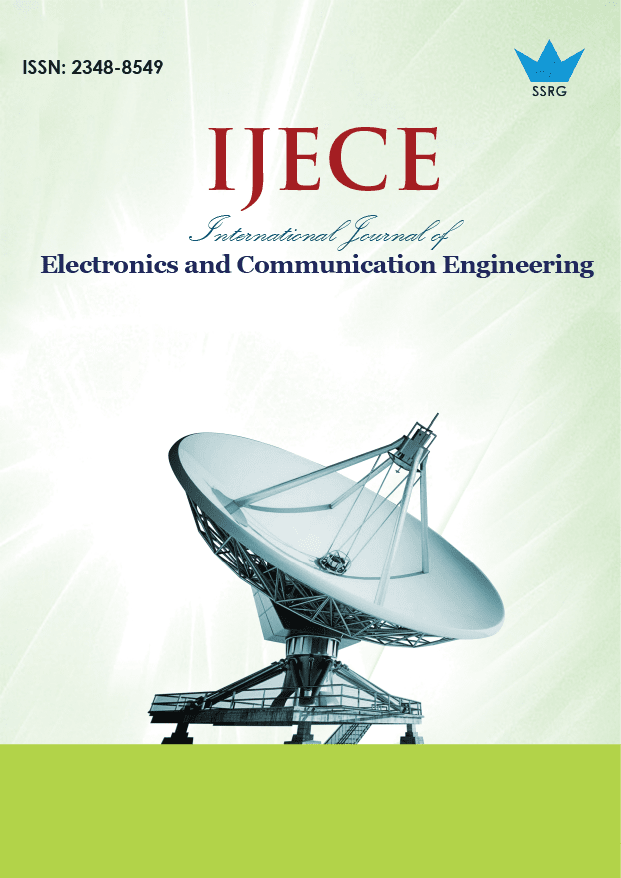Moth Flame Optimization and CNN-GBM Fusion for Advanced Business Intelligence in Banking

| International Journal of Electronics and Communication Engineering |
| © 2025 by SSRG - IJECE Journal |
| Volume 12 Issue 8 |
| Year of Publication : 2025 |
| Authors : Madhu Kumar Reddy P, M.N.V Kiranbabu |
How to Cite?
Madhu Kumar Reddy P, M.N.V Kiranbabu, "Moth Flame Optimization and CNN-GBM Fusion for Advanced Business Intelligence in Banking," SSRG International Journal of Electronics and Communication Engineering, vol. 12, no. 8, pp. 395-406, 2025. Crossref, https://doi.org/10.14445/23488549/IJECE-V12I8P134
Abstract:
In the era of digital banking, deriving actionable insights from customer complaints is essential to improve service quality, identify problems, and inform decision-making. Conventional methods are ineffective in handling high-dimensional and unstructured data, and their performance in real-world settings is compromised. This research proposes a hybrid deep learning model combining Moth Flame Optimization (MFO) and a CNN-GBM fusion model to overcome these limitations and deliver solid business intelligence from unstructured banking data. Preprocessing was performed on unstructured text data, mainly customer feedback, using common NLP methods such as stopwords removal, tokenization, and lemmatization. The pre-processed text was transformed into contextualized vector representations using BERT embeddings. Moth Flame Optimization was utilized to choose the most descriptive features, which minimized dimensionality and optimized the model's efficiency. A 1D Convolutional Neural Network (CNN) was utilized to obtain high-level features, which were trained using a Gradient Boosting Machine (GBM). The performance was measured with respect to baseline models like SVM and Random Forest. The new framework performed better, with the CNN+GBM model reaching an accuracy of 93.7% and an F1-score of 92.1%. MFO cut down the feature space by 67.5%, highly reducing training time while maintaining the accuracy of models. The value of ROC-AUC at 96.1% validated the high discriminatory capability. Comparative studies proved the new model outperforms traditional classifiers. This work illustrates how to leverage a combination of feature selection through MFO and the fusion of CNN-GBMs for unstructured banking data and business intelligence. Semantic richness comes through the adoption of BERT embeddings, complemented by computationally efficient assistance from MFO. The technique presents an interpretable and scalable banking solution available for institutions requiring inferences of information from bulky amounts of client-authored text.
Keywords:
BERT embeddings, Business Intelligence, CNN-GBM, Moth Flame, MFO, ReLU.
References:
[1] Ogechukwu Nwanneka Ezechi et al., “Service Quality Improvement in the Banking Sector: A Data Analytics Perspective,” International Journal of Advanced Multidisciplinary Research and Studies, vol. 5, no. 1, pp. 958-971, 2025.
[CrossRef] [Google Scholar] [Publisher Link]
[2] Farn Halper, “Advanced Analytics: Moving Toward AI, Machine Learning, and Natural Language Processing,” TDWI Best Practices Report, pp. 1-40, 2017.
[Google Scholar] [Publisher Link]
[3] Dhendra Marutho et al., “Optimizing Aspect-Based Sentiment Analysis using Sentence Embedding Transformer, Bayesian Search Clustering, and Sparse Attention Mechanism,” Journal of Open Innovation: Technology, Market, and Complexity, vol. 10, no. 1, pp. 1-19, 2024.
[CrossRef] [Google Scholar] [Publisher Link]
[4] Mohammad Shehab et al., “Moth–Flame Optimization Algorithm: Variants and Applications,” Neural Computing & Applications, vol. 32, pp. 9859-9884, 2020.
[CrossRef] [Google Scholar] [Publisher Link]
[5] Iyad Abu Doush et al., “Improving Multilayer Perceptron Neural Network using Two Enhanced Moth-Flame Optimizers to Forecast Iron Ore Prices,” Journal of Intelligent Systems, vol. 33, no. 1, pp. 1-23, 2024.
[CrossRef] [Google Scholar] [Publisher Link]
[6] Xue-song Tang et al., “A Moth–Flame Optimized Echo State Network and Triplet Feature Extractor for Epilepsy Electro-Encephalography Signals,” Mathematics, vol. 11, no. 6, pp. 1-16, 2023.
[CrossRef] [Google Scholar] [Publisher Link]
[7] Sanjay Kumar et al., “Exploitation of Machine Learning Algorithms for Detecting Financial Crimes based on Customers’ Behavior,” Sustainability, vol. 14, no. 21, pp. 1-24, 2022.
[CrossRef] [Google Scholar] [Publisher Link]
[8] Remigiusz Tunowski, “Sustainability of Commercial Banks Supported by Business Intelligence System,” Sustainability, vol. 12, no. 11, pp. 1-17, 2020.
[CrossRef] [Google Scholar] [Publisher Link]
[9] Kaushik Sathupadi et al., “BankNet: Real-Time Big Data Analytics for Secure Internet Banking,” Big Data and Cognitive Computing, vol. 9, no. 2, pp. 1-31, 2025.
[CrossRef] [Google Scholar] [Publisher Link]
[10] Jingyuan Li et al., “Credit Risk Prediction Model for Listed Companies based on CNN-LSTM and Attention Mechanism,” Electronics, vol. 12, no. 7, pp. 1-18, 2023.
[CrossRef] [Google Scholar] [Publisher Link]
[11] Yunjie Liu et al., “Intelligent Prediction of Customer Churn with a Fused Attentional Deep Learning Model,” Mathematics, vol. 10, no. 24, pp. 1-16, 2022.
[CrossRef] [Google Scholar] [Publisher Link]
[12] Nadire Cavus et al., “An Artificial Intelligence-Based Model for Prediction of Parameters Affecting Sustainable Growth of Mobile Banking Apps,” Sustainability, vol. 13, no. 11, pp. 1-21, 2021.
[CrossRef] [Google Scholar] [Publisher Link]
[13] Shadi Oyarhossein et al., “Optimizing Open Banking in the Age of Digital Transformation by the Metaheuristic Algorithms of the Firefly & FMO,” International Journal of Finance & Managerial Accounting, vol. 9, no. 32, pp. 123-142, 2024.
[CrossRef] [Google Scholar] [Publisher Link]
[14] Ladislava Knihová, “Opportunities and Challenges of Digital Customer Learning in Banking,” Financial Markets 2021, pp. 157, 2021.
[Google Scholar] [Publisher Link]
[15] Ashlee Humphreys, and Rebecca Jen-Hui Wang, “Automated Text Analysis for Consumer Research,” Journal of Consumer Research, vol. 44, no. 6, pp. 1274-1306, 2018.
[CrossRef] [Google Scholar] [Publisher Link]
[16] Hao Wang, “Semantic Deep Learning,” University of Oregon, pp. 1-42, 2015.
[Google Scholar] [Publisher Link]
[17] Dhaval Rupapara, Bank Reviews Dataset, Kaggle, 2025. [Online]. Available: https://www.kaggle.com/datasets/dhavalrupapara/banks-customer-reviews-dataset

 10.14445/23488549/IJECE-V12I8P134
10.14445/23488549/IJECE-V12I8P134